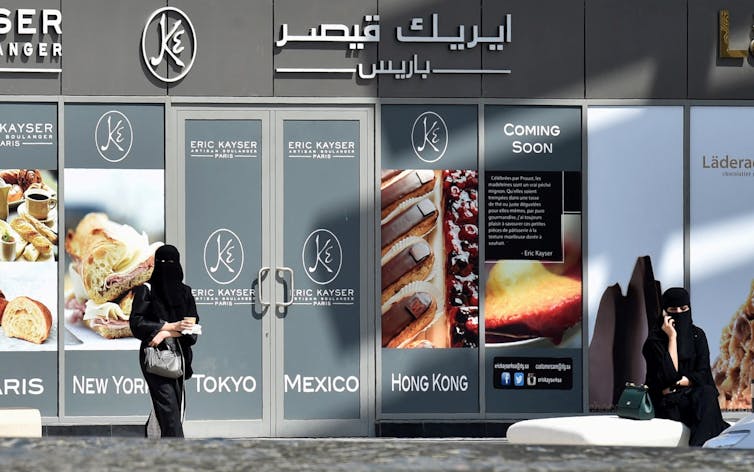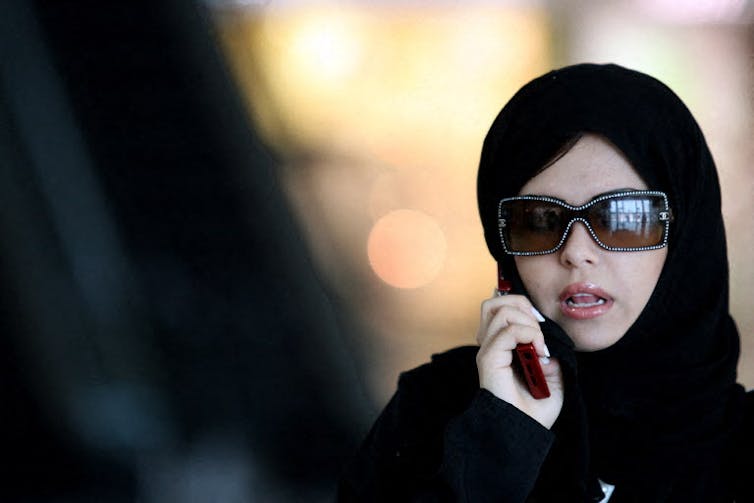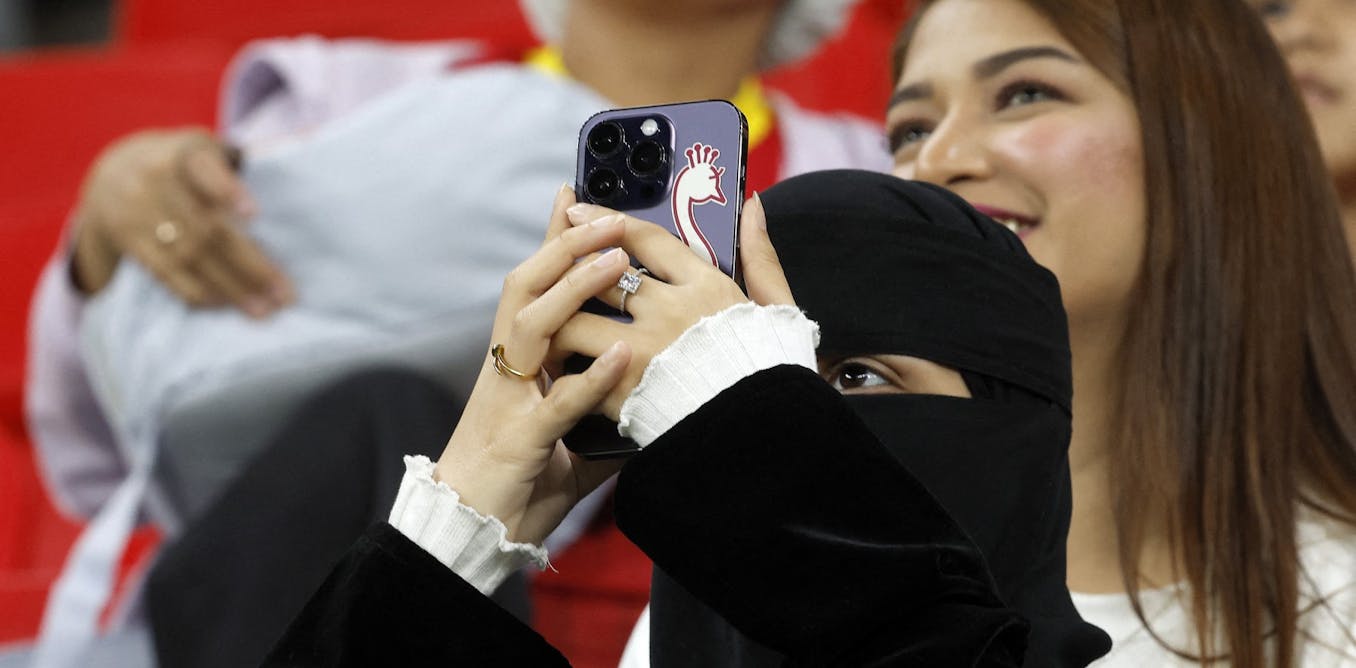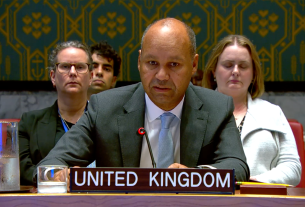In January 2019, the plight of Rahaf Mohammed al-Qunun captured global attention. The young Saudi woman, attempting to escape her family, found herself stranded in Thailand after her passport was confiscated. Armed with her smartphone, she used social media to alert international organisations about the fate awaiting her. Canada eventually granted her asylum. The Saudi chargé d’affaires in Thailand then declared that the authorities should have deprived her of her phone, thereby revealing the unprecedented power of this connected device.
That same year, activist Manal al-Sharif, known for cofounding the Women2Drive movement in 2011 and popularising it on social networks, closed her Twitter and Facebook accounts. The very social media platforms that had first allowed her to liberate her voice had become a trap, serving Saudi propaganda and misinformation efforts. Instruments of resistance and feminist mobilisation that resonated worldwide, social media platforms also proved to be oppressive weapons.
By the late 2010s, countless Saudi women were leveraging social media to build both small businesses and larger enterprises.
These examples reflect the remarkable complexity of women’s experiences in Saudi Arabia – conditions that cannot be reduced to the stereotypical representation of the Muslim woman as victimised and submissive or, conversely, as a glamorous, cosmopolitan entrepreneur. They also highlight the role the smartphone can play in challenging gender norms.
The kingdom presents a fascinating paradox: religious conservatism coupled with technological innovation. It ranks among the world’s most connected nations, boasting exceptional penetration rates for microblogging and social media, particularly YouTube. Introduced in the 2000s, the smartphone rapidly took root in this society, which has made digitisation and investment in tech one of its new political banners.
Fayez Nureldine/AFP
The institutionalisation of gender segregation
Shaped by historical, cultural, religious, and economic dimensions, the identity of Saudi women is more complex than what has been conveyed in the West, which tends to see them only as subordinates.
It is true that the tribal heritage and Wahhabi doctrine, dominant in the country, long imposed a strict framework that shaped women’s place in society. But paradoxically, it was the oil boom of the 1970s that reinforced and institutionalised gender segregation, constituting both an obstacle and a lever for women’s emancipation.
However, in the 2000s, progressive reforms took place: since 2014, Saudi women have been able to work in many sectors without requiring their guardian’s approval; since 2018, they have been allowed to open their own businesses and drive without male consent; and since 2019, they have been able to travel independently, no longer bound by guardianship restrictions. The Vision 2030 plan further accelerated this movement by placing economic and social liberalisation at the heart of Saudi political projects.

Fayez Nureldine/AFP
Saudi society nevertheless remains sexist and hierarchical, with gender relations embedded in a patriarchal system where men hold authority and define female honour as a property to be protected. This hierarchy manifests itself in the family, public space, law, and even in language, which enshrines male domination.
It is in this context of a segregated society, where Saudi women were long confined to the domestic sphere, but also within the framework of reforms in favour of women’s rights, that the smartphone exerts its polyvalent and paradoxical role.
Smartphones disrupting gender boundaries
Saudi women quickly appropriated the Internet and, even more so, the smartphone. Initially more connected than men – 96% of them used the Internet in 2015, compared to 88% of men (according to the Communications and Information Technology Commission, now the Space and Technology Commission) – Saudi women also spent more time online, and connected more often from home and via their smartphones. These practices were linked both to the social construction of gender identity, which confined them to the domestic sphere, and to the ban on driving, which reinforced their reliance on the smartphone.
Far from being a simple technical tool, the smartphone was thus invested as a medium of visibility and self-expression to compensate for an invisibility engendered by gender segregation.
Always at hand, the smartphone also became a fashion accessory, highly visible for women dressed in an abaya and niqab – all the more so before Crown Prince Mohammed bin Salman, the strongman of the kingdom, declared in 2018 that the abaya was no longer mandatory.
In this stratified society where objects carry distinctive power – a latest-generation iPhone being a social and aesthetic marker – the smartphone becomes an ostentatious ornament, an instrument of stylisation and self-presentation displayed in public spaces, particularly in shopping malls where women can stroll with confidence.

Fayez Nureldine/AFP
Beyond its symbolic role, the smartphone opened up a space for emancipation through photography and social networks, even though human imagery remains controversial in Islam and photographs were long proscribed in Saudi Arabia, to the extent that the first camera-equipped phones were banned. These prohibitions gradually gave way, despite persistent restrictions.
In 2016, the rise of Snapchat played a decisive role. Very popular in Saudi Arabia – the kingdom ranked among the world’s top users – the app allowed young women to make themselves visible through selfies and retouched portraits. Filters served as strategies to circumvent Islamic censorship, as a modified face or body was no longer considered a human representation. These playful uses could be transgressive: showing one’s hair or face, even altered, amounted to defying norms.
The smartphone thus enabled Saudi women to negotiate with codes, assert female presence in digital spaces, and, at times, contest the established social order.
The smartphone: a tool for or against feminism?
For Saudi women, who were prevented from driving until 2018, the smartphone became a tool of mobility through ride-hailing apps such as Uber or Careem, allowing them to move without relying on a male family member or a private driver. Geolocation apps, meanwhile, reassured relatives and facilitated outings for young women.

Hassan Ammar/AFP
Beyond this, the smartphone constitutes a genuine instrument of activism. The Women2Drive movement thus gained new momentum through digital platforms. Indeed, IN 2013, it was with their connected mobiles that Saudi women publicly defied the driving ban by filming themselves behind the wheel and sharing these videos on YouTube and Twitter.
More broadly, in a country where the political scene is non-existent, it is on social media that feminist debates and mobilisations take place. It is also thanks to the development of digital services that Saudi women have been able to circumvent some of the rules of the guardianship system. Thus, the government application Absher, created in 2015, simplified women’s daily lives and their guardians’ administrative tasks, even opening up a way to bypass the system by allowing women to grant themselves travel authorisations.
Yet, the smartphone can also work against feminism. The very same Absher app, initially designed to streamline administrative procedures, has been denounced as a surveillance tool reinforcing control over women. Furthermore, instrumentalised by the regime, smartphones have become tracking devices through their IMEI numbers, used to monitor dissidents or women attempting to escape their possible tragic fate.
Both a tool of emancipation and empowerment, the smartphone in Saudi Arabia, then, is also an instrument of control. Beyond the cases of Rahaf Mohammed or Manal al-Sharif mentioned above, it has enabled women to develop entrepreneurial activities on Instagram, or Muslim preachers to defend women’s rights in digital spaces by advocating for the preservation of the guardianship system, which some of them see as a protective framework for Saudi women.
In service of feminism – a look away from the West reveals the plurality of feminism’s faces, irreducible to a model of resistance based on Western experiences – the smartphone in Saudi Arabia can both advance and undermine women’s causes. It has reinforced the control of dissident voices, developed spying and tracking practices, and consolidated, through social media platforms, a culture of surveillance already embedded in the social fabric. Neither a simple tool of emancipation nor a pure instrument of oppression, the smartphone remains an object and a space of tension where power relations and gender norms are redrawn.
This text draws on a presentation at the XXIe Congress of the Association internationale des sociologues de langue française (AISLF) held in 2019.

A weekly e-mail in English featuring expertise from scholars and researchers. It provides an introduction to the diversity of research coming out of the continent and considers some of the key issues facing European countries. Get the newsletter!



